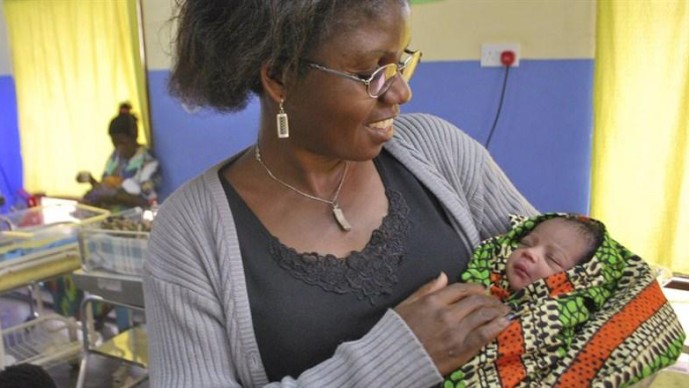The Winning Cutting-Edge Ideas to Save Lives
- Gary Darmstadt, Wendy Prosser, Andrew Serazin, Jul 18, 2012

Take a trip to Ethiopia. Or try Bangladesh or perhaps the Democratic Republic of Congo. But go someplace with low resources, where new mothers and their newborns struggle just to survive.
That in essence is what we have asked global health innovators and entrepreneurs to do with the Saving Lives at Birth initiative - to understand these communities and to design solutions for and with them. The Saving Lives at Birth partnership begins and ends in communities and with families in the world’s poorest and hardest-to-reach places. We aim to understand the context in which families live, the issues they face, and design solutions with them through a partnership of funders, innovators, and communities. We received more than 500 submissions from innovators, researchers, practitioners in the field, entrepreneurs, and public health specialists, and we whittled them down to 65 of the most promising.
Last week the DevelopmentXChange, guided by the theme of "Meeting Families Where They Are," brought these finalists together in Seattle to seek the opportunity to develop and test their ideas.
But it was much more than just a simple announcement of winners. This venue brought global health experts and entrepreneurs together to share with each other, to discover what other researchers are experimenting with, to see what for-profit innovations could be applied to public health in low-resource settings. They had the opportunity to learn from each other about the design process when designing for scale, or using social media to raise awareness of programs and innovations, or understanding communities and how to design products that are most appropriate for them.
Each finalist pitched their proposal and the top 15 submissions were chosen for funding support. The notable proposals are innovations in three areas: technology and product development; the demand side of global health with behavior change at the community level; and service delivery with business models to get the new technologies to the communities that need and now want them. Interventions must increase access to and the quality of primary health care for women and newborns and lead to improved and sustained healthy behavior.
Solutions should by "off the beaten track," those crazy ideas that may not be so crazy, that can enhance uptake and acceptability and provide for sustained use. Innovations must be low-cost and scalable in resource-poor settings. And of course, the substantial impact of potential innovations must be able to be monitored, measured and systematically evaluated.
You can see all the submissions at the Saving Lives at Birth website. A few of the finalists and their plans for lifesaving innovations are highlighted here:
The University of Oxford proposes to develop a formulation of an antibiotic for rectal administration in order to treat neonatal sepsis in the community. When a newborn has sepsis, death can occur within hours. The current treatment is with injectable antibiotics provided at a health center, which is oftentimes not easily accessible or affordable in low-resource settings. This innovation would make it feasible to treat neonatal sepsis at home by relatively unskilled personnel, saving the lives of newborns around the world.
The project from Jacaranda Health focuses on the postpartum period and how to increase coverage of postnatal care and family planning in the areas in which they work in Kenya. The components of their proposal include a postpartum checklist for moms with reminders through SMS on cell phones; home visits from frontline health workers and support group meetings for new moms; and approaches to reduce the barriers of cost of postnatal services using innovative mobile savings tool.
One of Jhpiego’s winning submission also focuses on the postpartum period as a way to prevent maternal and newborn mortality due to poor birth spacing. They propose to increase the use of the postpartum intrauterine device by improved training for providers and increased awareness of this very effective contraceptive. The project will be piloted in Pakistan but with the goal of introducing it in family planning programs around the world.
From the commercial sector, an innovative device called SafeSnip from NOvate Medical Technologies will be brought to resource-constrained settings. SafeSnip is a simple and effective device that simultaneously cuts, clamps, and shields the umbilical cord from infection. This technology can dramatically reduce the risk of neonatal infection through the cut umbilical cord, a major cause of newborn mortality in many low-income settings.
Another grant will go to Rice University for the expansion of their low-cost respiratory support system which helps babies breath at birth. This type of grant allows for solutions that have already demonstrated success to be rigorously tested to prove the potential impact at a sustainable scale. This device has taken expensive technology, widely-available in developed countries, maintained its efficacy and made it cost-effective, easy to maintain, and scalable in resource-poor settings.
All of the submissions reviewed at the DevelopmentXChange were full of innovative and cutting edge ideas. We anticipate that all participants, not just those who won, left the convening a bit more inspired, motivated, and energized to be innovative, creative and dedicated to saving women and newborn’s lives. At the final DevelopmentXChange reception, Melinda Gates called for innovations for women, something which has been sorely neglected in public health.
We hope that this process has sparked further innovation and creativity around the world, and inspired experts from all fields to share experiences and knowledge. It’s that collective energy from a diverse set of experts that will save lives at birth.